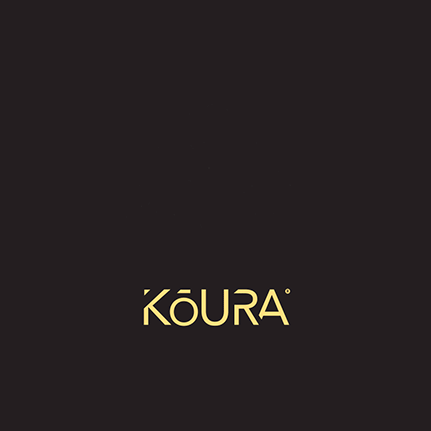Decoding Mānuka Honey Certifications
- Alyssa De Leon
- Oct 13
- 4 min read
Manuka honey has taken the world by storm. Known for its unique taste and impressive health benefits, it’s often called "liquid gold." But with popularity comes confusion. How do you know if the honey you’re buying is genuine? That’s where honey authenticity certifications come in. They help you separate the real deal from the imposters. Let’s dive into what these certifications mean and why they matter.
Understanding Honey Authenticity Certifications
When you pick up a jar of Manuka honey, you might notice various labels and seals. These aren’t just for show. They are there to guarantee quality, purity, and authenticity. But what exactly do these certifications cover?
Honey authenticity certifications verify several key factors:
Origin: Is the honey truly from New Zealand, where Manuka plants grow?
Purity: Is the honey free from additives or blends with other honeys?
Potency: Does the honey contain the unique compounds that give Manuka its special properties?
These certifications are essential because Manuka honey is often imitated or diluted. Without them, you risk paying premium prices for subpar products.

Why Should You Care?
If you’re using Manuka honey for health or skincare, authenticity matters. Certified honey ensures you get the antibacterial and anti-inflammatory benefits you expect. Plus, it supports ethical beekeeping and sustainable practices in New Zealand.
What is UMF Certification?
One of the most recognized certifications is UMF, which stands for Unique Manuka Factor. This certification is a gold standard in the industry. But what does it actually mean?
UMF measures the concentration of three key compounds:
Methylglyoxal (MGO): The main antibacterial agent.
Dihydroxyacetone (DHA): Found in the nectar of Manuka flowers.
Leptosperin: A chemical marker unique to Manuka honey.
The UMF rating, usually a number like 5+, 10+, or 20+, indicates the strength of these compounds. The higher the number, the more potent the honey.
How to Spot Genuine UMF Honey
Look for the UMF trademark on the label. It’s a registered mark that only licensed producers can use. This ensures the honey has passed strict testing and meets quality standards.

UMF vs Other Ratings
You might also see MGO ratings on some jars. While MGO focuses on one compound, UMF covers three, making it a more comprehensive measure. Both are useful, but UMF is often preferred for its thoroughness.
Other Important Certifications to Know
Besides UMF, there are several other certifications and standards that help verify Manuka honey’s authenticity.
MGO Certification
This rating shows the level of methylglyoxal in the honey. It’s a straightforward way to understand antibacterial strength. For example, MGO 100+ means the honey contains at least 100 mg/kg of methylglyoxal.
KFactor Certification
Developed by Wedderspoon, KFactor measures pollen count and purity. It ensures the honey contains a high percentage of Manuka pollen, confirming its origin.
BioGro and Organic Certifications
If you prefer organic products, look for BioGro or other organic certifications. These guarantee the honey is produced without synthetic chemicals or pesticides.
Why Multiple Certifications Matter
Sometimes, a jar of Manuka honey will carry more than one certification. This layered approach gives you extra confidence in the product’s quality and authenticity.
How to Choose the Right Manuka Honey for You
With all these certifications, how do you pick the best honey? Here are some tips:
Check the Label Carefully
Look for official certification marks like UMF or MGO. Avoid vague claims like "pure" or "natural" without proof.
Understand Your Needs
Are you using honey for daily wellness, wound care, or skincare? Higher UMF or MGO ratings are better for therapeutic uses.
Buy from Trusted Brands
Brands that invest in manuka honey certification and transparent testing are more reliable.
Consider Price and Value
Genuine Manuka honey is expensive. If the price seems too good to be true, it probably is.
Look for Traceability
Some brands provide batch numbers and testing reports. This transparency is a good sign.

The Future of Manuka Honey and Certifications
As demand grows, so does the need for stricter standards. New Zealand’s regulatory bodies and industry groups are working hard to protect Manuka honey’s reputation. This means better testing methods, clearer labeling, and stronger enforcement against counterfeit products.
For consumers, this is great news. It means more confidence in every jar you buy. Plus, it supports sustainable beekeeping and the environment.
How Koura is Leading the Way
Koura is committed to premium quality and authenticity. By embracing rigorous manuka honey certification standards, Koura ensures every product delivers the true benefits of Manuka honey. Whether you’re enjoying it as a superfood or using it in skincare, you can trust Koura’s liquid gold.
Unlocking the Benefits of Certified Manuka Honey
Certified Manuka honey isn’t just a tasty treat. It’s a powerful natural product with many uses:
Health Boost: Supports immune function and digestion.
Wound Healing: Antibacterial properties help skin repair.
Skincare: Hydrates and soothes sensitive skin.
Energy: Natural sugars provide a quick, clean energy source.
By choosing certified honey, you maximize these benefits. It’s a small step that makes a big difference.
Now that you know how to decode honey authenticity certifications, you’re ready to make smarter choices. Look for trusted labels, understand what they mean, and enjoy the pure, potent goodness of genuine Manuka honey. Your body and skin will thank you!









Comments